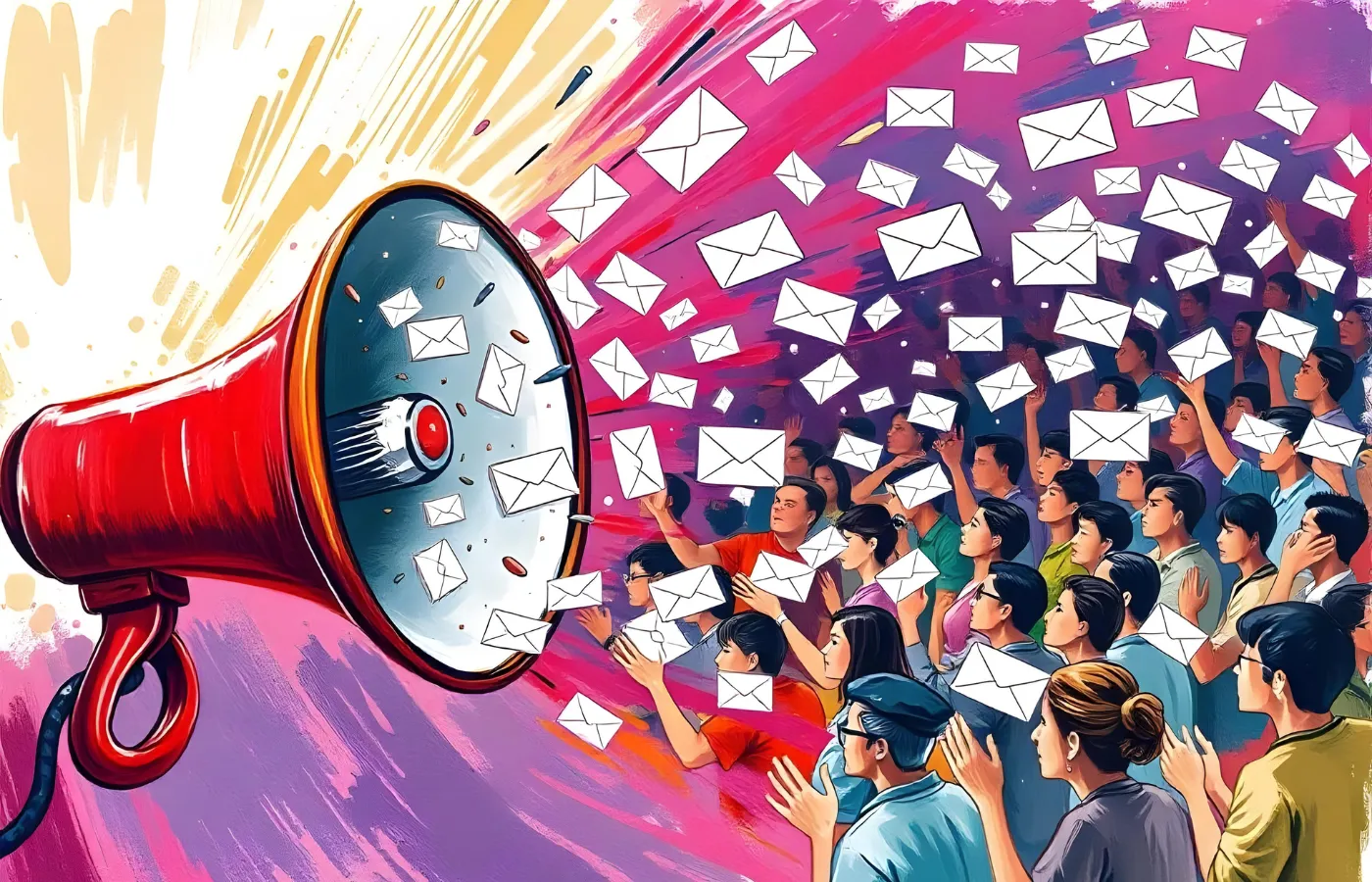Introduction:
Imagine this, you’ve got a room full of potential clients, but how do you get their attention? You could stand in the middle and shout, hoping someone will hear you (that’s a cold email blast). Or, you could walk around, strike up personal conversations, and build rapport with each individual that’s a personalized email campaign. Both methods can work, but which is best for your business? And could there be a sweet spot somewhere in between?
Let’s dive into the world of email marketing and explore the battle of quantity vs. quality.
1. Cold Email Blasts: The Pros & Cons
Cold email blasts are the megaphone of email marketing, loud, wide-reaching, and not always the most personalized. But they have their place in the email marketing world due to their sheer usage and the results they have provided.
Pros:
- Massive Reach: Cold email blasts allow you to hit a large audience quickly. You can send thousands of emails with a few clicks and potentially reach a broad range of leads.
- Fast Results: Need to promote a sale or announce a new product quickly? Cold email blasts get the word out fast, often generating immediate results.
- Cost-Effective: It’s cheap. You don’t have to spend hours crafting each message; the goal is volume, not perfection.
Cons:
- Low Engagement: Let’s face it, people might not appreciate receiving random emails. Your reply rates may be low because most people ignore or delete emails from unfamiliar senders.
- High Unsubscribe and Spam Rates: If you send too many impersonal emails, you risk being marked as spam, hurting your email deliverability in the long run.
- Lack of Personalization: Cold email blasts are usually one-size-fits-all. They don’t feel personal, and recipients are quick to sense that. This can make it harder to establish trust or connection with your audience.

2. Personalize Email Campaigns: The Pros & Cons
On the other side of the spectrum, personalized email campaigns are like whispering directly in someone’s ear in that crowded room. They take more effort, but they can create lasting relationships.
Pros:
- Higher Engagement Rates: Personalized emails feel like you’re speaking directly to the recipient. These emails often result in higher open, click-through, and reply rates.
- Building Relationships: By tailoring emails to each recipient, you can foster trust and build relationships, which are essential for nurturing leads and converting them into loyal customers.
- Targeted Messaging: You can customize your message to speak to the recipient’s specific needs, pain points, and interests. This makes your email more relevant and valuable.
Cons:
- Time-Consuming: Crafting personalized emails is time-consuming. Research is needed for each prospect to create a custom message. It slows down the process esp, especially if a large audience is the target
- Resource-Intensive: Personalized campaigns require more time, tools, and personnel. You’ll likely need a robust CRM system to manage the data and automate parts of the personalization process.
- Limited Reach: Personalized emails, by their nature, target a smaller audience. You won’t be able to reach as many people as quickly as with a cold email blast.
The Middle Ground: Automation Meets Personalization
So, what if you could get the best of both worlds—scale and personalization? Luckily, there’s a sweet spot that blends the advantages of both strategies: automated personalized campaigns.
How Does It Work?
- Segmentation: Start by dividing your email list into smaller groups based on certain characteristics like behavior, location, or interests. This way, you can send more tailored content without personalizing each individual email.
- Automation Tools: Use email marketing platforms that allow you to automate personalized messages. You can still use cold outreach techniques, but with a touch of personalization that makes the recipient feel seen.
- Dynamic Content: Include placeholders in your emails (like the recipient’s name, company, or specific interests) that get filled in automatically. This allows you to send thousands of personalized emails at scale.
Benefits of the Middle Ground:
- Better Engagement: Segmenting your list and automating personalized messages helps you avoid the generic feel of a cold email blast while still maintaining a large reach.
- Time-Saving: You can automate parts of the process, saving time on manual personalization while still creating meaningful connections.
- Cost-Effective: You’re still leveraging email blasts but with more innovative, more targeted content. This ensures better ROI and prevents you from being labeled as spammy.

3. Which Approach Is Right for Your Business?
Now that we’ve outlined the pros and cons and suggested a possible middle ground, the question remains: Which approach is best for your business?
Cold Email Blasts:
- Best for businesses looking for quick outreach with a wide audience.
- Ideal for product launches, promotions, or gathering data on a broad audience.
- Use when time is of the essence and you need to get a message out fast.
Personalized Email Campaigns:
- Perfect for businesses focused on building relationships and nurturing leads.
- Ideal for high-value prospects where conversion rates are more important than volume.
- Use when you want to build trust and establish long-term relationships with your audience.
The Middle Ground:
- Best for businesses that want to balance reach and personalization.
- Ideal for scaling while maintaining some level of personalized interaction.
- Use when you want to engage your audience meaningfully without sacrificing efficiency.
1.Practical Tips for Success
Whether you choose cold email blasts, personalized email campaigns, or the middle ground, here are some practical tips for ensuring success in your email marketing efforts:
2. Craft a Compelling Subject Line:
No matter the strategy, the subject line is your first impression. Make it enticing, relevant, and personalized when possible.
3. Test and Optimize:
Don’t set it and forget it. Test different approaches, measure our results, and adjust your strategy accordingly.
4. Focus on Value:
Ensure that your email content, whether cold or personalized, offers real value to the recipient. Address their needs, solve their problems, and give them a reason to engage.
5. Respect Privacy and Consent:
Always follow email marketing regulations, like GDPR, and ensure you have permission to contact your recipients.
6. Follow-Up Thoughtfully:
Whether it’s a cold blast or a personalized message, a well-timed follow-up can significantly boost your chances of a positive reply.
Conclusion: Finding Your Email Marketing Sweet Spot
The answer isn’t always black and white in the battle of cold email blasts vs. personalized email campaigns. Cold emails offer a broad reach, while personalized campaigns build deeper connections. The middle ground, automated, segmented email campaigns, allows you to enjoy the benefits of both strategies.
Ultimately, the right approach depends on your goals, audience, and resources. Start by identifying what you want to achieve, test different methods, and refine your strategy based on the results. Whether you’re shouting from the rooftops or whispering in someone’s ear, email marketing has the power to drive meaningful business results when done right.


